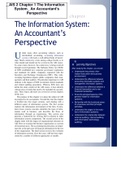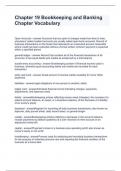Exam (elaborations)
AIS 2 Chapter 1 The Information System An Accountant's Perspective LATEST UPDATE
- Institution
- Psychiatric Mental Nurse Practitioner.
AIS 2 Chapter 1 The Information System An Accountant's Perspective LATEST UPDATE AIS 2 Chapter 1 The Information System An Accountant's Perspective LATEST UPDATE AIS 2 Chapter 1 The Information System An Accountant's Perspective LATEST UPDATE AIS 2 Chapter 1 The Information System An Account...
[Show more]




